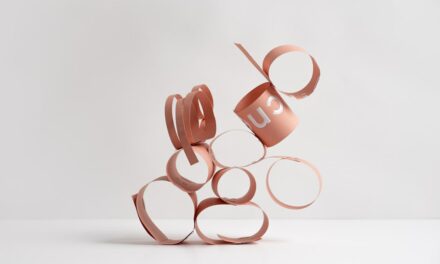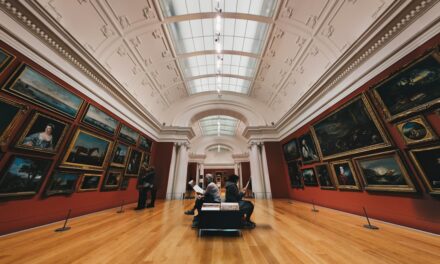Graphite powder, a versatile medium often overlooked in the realm of drawing and painting, offers artists a unique opportunity to explore a range of textures and effects. Unlike traditional graphite pencils, which provide a more controlled application, graphite powder allows for a fluid and expressive approach to mark-making. This fine, dry material can be used to create everything from delicate highlights to deep shadows, making it an essential tool for artists seeking to expand their repertoire.
The beauty of graphite powder lies in its ability to blend seamlessly with other mediums, enabling artists to experiment with mixed media techniques that can elevate their work to new heights. As we delve into the world of graphite powder techniques, it is essential to understand the fundamental principles that govern its use. The application of graphite powder can be both intuitive and methodical, depending on the desired outcome.
Artists can manipulate the powder through various methods, such as brushing, smudging, or even spraying, allowing for a diverse range of effects. This article will explore the subtleties of shading, the tools and materials required, and the techniques that can help artists achieve professional results with graphite powder. Whether you are a seasoned artist or a beginner looking to experiment, understanding these techniques will enhance your artistic practice and open up new avenues for creativity.
Summary
- Graphite powder techniques offer a unique and versatile approach to creating artwork.
- Subtle shading with graphite powder can add depth and dimension to your drawings.
- Essential tools and materials for graphite powder techniques include graphite powder, blending stumps, and various grades of paper.
- Techniques for creating subtle shading involve layering and blending graphite powder to achieve smooth transitions.
- Large area coverage with graphite powder can be achieved using a variety of application methods, such as brushes and soft cloths.
Subtle Shading with Graphite Powder
Portraiture and the Importance of Skin Tone
This technique is particularly effective in portraiture, where capturing the nuances of skin tone and texture is crucial for conveying emotion and character. To achieve subtle shading with graphite powder, artists often begin by laying down a base layer of powder using a soft brush or their fingers. This initial application serves as a foundation upon which further layers can be added.
Controlling Intensity and Achieving Harmony
By varying the pressure applied during subsequent applications, artists can control the intensity of the shading, allowing for delicate highlights and rich shadows to coexist harmoniously. The key to mastering this technique lies in patience and practice; artists must be willing to experiment with different approaches to find what works best for their individual style.
The Rewards of Persistence
With graphite powder, the possibilities for subtle shading are endless, and the rewards of persistence are well worth the effort. By dedicating time to mastering this technique, artists can unlock new levels of realism and emotional depth in their work, creating pieces that truly captivate and inspire.
Tools and Materials for Graphite Powder Techniques
To effectively utilise graphite powder techniques, artists must equip themselves with the right tools and materials. The primary component, of course, is high-quality graphite powder itself. Available in various grades, from soft to hard, artists should select a powder that aligns with their intended application.
Soft graphite powders are ideal for creating rich darks and smooth transitions, while harder powders can be used for finer details and lighter tones. In addition to graphite powder, artists will benefit from having a selection of brushes on hand. Soft, wide brushes are excellent for applying large areas of powder, while smaller detail brushes can help refine specific sections of a piece.
Blending stumps or tortillons are also invaluable tools for achieving smooth transitions between shades. These cylindrical tools allow artists to blend graphite without disturbing the underlying layers too much. Finally, a sturdy surface such as heavyweight paper or canvas is essential for supporting the application of graphite powder and ensuring that it adheres properly.
Techniques for Creating Subtle Shading
Creating subtle shading with graphite powder involves several techniques that can be adapted to suit an artist’s style and preferences. One effective method is the use of layering; by applying multiple thin layers of graphite powder, artists can gradually build up depth and richness in their work. This technique not only allows for greater control over tonal values but also encourages experimentation with different blending methods.
Another technique involves the use of varying application tools. For instance, using a soft cloth or sponge can yield different results compared to a brush or blending stump. Each tool interacts with the powder differently, producing unique textures and effects.
Artists may also find it beneficial to incorporate their fingers into the process; the warmth and natural oils from the skin can help blend the powder seamlessly into the surface. Ultimately, the key to mastering subtle shading lies in understanding how different techniques can be combined to create a cohesive and visually engaging piece.
Large Area Coverage with Graphite Powder
When it comes to covering large areas with graphite powder, artists must adopt specific strategies to ensure an even application without compromising the integrity of their work. One effective approach is to use a large brush or a soft cloth to apply the powder in sweeping motions across the surface. This technique allows for quick coverage while maintaining control over the distribution of the material.
It is essential to work in layers, gradually building up the desired tone rather than attempting to achieve it all at once. Another consideration when working with large areas is the choice of surface. Heavier papers or canvas can better withstand the application of graphite powder without warping or buckling.
Additionally, artists may want to experiment with different textures; smoother surfaces will yield different results compared to more textured ones. By understanding how various surfaces interact with graphite powder, artists can make informed decisions that enhance their overall composition.
Blending Techniques for Large Areas
Using Brushes and Blending Stumps
One popular blending technique involves using a clean brush or blending stump to gently work the powder into the surface. This method allows for precise control over the blending process while maintaining the integrity of the underlying layers.
Soft Cloth and Tissue Paper Blending
Another effective blending technique is the use of a soft cloth or tissue paper. By lightly rubbing the cloth over the powdered area, artists can achieve a soft focus effect that enhances depth and dimension. It is important to use gentle pressure during this process; too much force can disturb the layers beneath and lead to uneven results.
Maintaining Clean Blending Tools
Additionally, artists may find it helpful to keep their blending tools clean and free from excess graphite buildup to ensure consistent results throughout their work.
Fixatives and Sealants for Graphite Powder Artwork
Once an artwork created with graphite powder is complete, it is essential to protect it from smudging and fading over time. This is where fixatives and sealants come into play. Fixatives are specially formulated sprays that help set the graphite in place without altering its appearance significantly.
Artists should choose a fixative that is compatible with their chosen surface and apply it in light, even coats to avoid saturating the artwork. When selecting a fixative, it is crucial to consider whether you want a matte or glossy finish. Matte fixatives tend to preserve the natural look of graphite while providing protection against dust and moisture.
In contrast, glossy fixatives can enhance contrast but may alter the appearance of the artwork slightly. Regardless of the choice made, applying fixative in a well-ventilated area is advisable to ensure safety during the process.
Tips and Tricks for Achieving Professional Results
Achieving professional results with graphite powder requires practice, patience, and an understanding of various techniques. One valuable tip is to always start with light applications before gradually building up darker tones; this approach allows for greater control over tonal values and helps prevent mistakes that may be difficult to correct later on. Additionally, keeping a sketchbook dedicated to experimenting with different techniques can provide invaluable insights into what works best for your style.
Another important consideration is lighting; working in natural light can help artists see tonal variations more clearly and make informed decisions about shading and blending. Furthermore, taking breaks during long sessions allows for fresh perspectives on your work, enabling you to identify areas that may need adjustment or refinement. Finally, don’t hesitate to seek feedback from fellow artists or mentors; constructive criticism can provide new ideas and approaches that enhance your artistic practice.
In conclusion, mastering graphite powder techniques opens up a world of possibilities for artists seeking to create subtle shading and large area coverage in their work.
With practice and experimentation, anyone can harness the power of graphite powder to elevate their artistic expression.
If you are interested in exploring the colours of life through art, you may want to check out the article Colours of Life. This piece delves into the various ways in which artists use colour to convey emotions and messages in their work. Understanding the power of colour can greatly enhance your graphite powder techniques, whether you are focusing on subtle shading or covering large areas. Additionally, the article Envisioning Art may provide further inspiration for your artistic journey, while Crafting the Unseen offers a unique perspective on the creative process.
FAQs
What is graphite powder?
Graphite powder is a form of carbon that is finely ground into a powder. It is commonly used in art and drawing for creating subtle shading and large areas of tone.
How is graphite powder used for subtle shading?
Graphite powder can be applied with a brush or a blending tool to create smooth and subtle shading in drawings. It allows for a soft and gradual transition between light and dark areas.
How is graphite powder used for large areas?
Graphite powder can be applied with a soft cloth or a blending stump to cover large areas of a drawing with a consistent tone. It is a quick and efficient way to add depth and dimension to a piece of artwork.
What are the benefits of using graphite powder for shading?
Graphite powder allows for a greater range of tonal values and can create a more realistic and three-dimensional effect in drawings. It is also a versatile and convenient medium for artists to work with.
Are there any special techniques for using graphite powder?
Some artists use a dry brush technique to apply graphite powder for a more textured and expressive effect. Others may use a fixative spray to set the powder and prevent smudging.
Can graphite powder be used in combination with other drawing materials?
Yes, graphite powder can be used in combination with graphite pencils, charcoal, and other drawing materials to create a variety of effects and textures in artwork.



